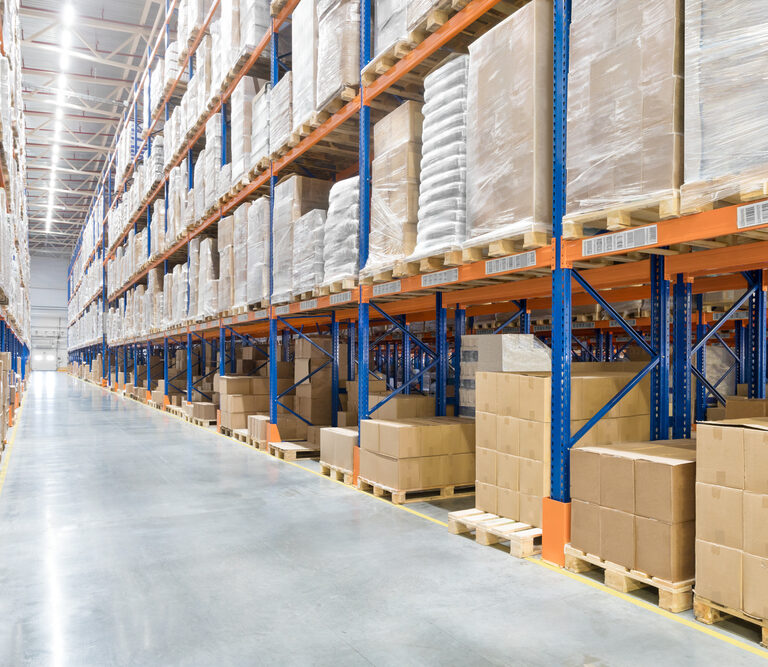As warehouse operations grow more complex and throughput requirements continue to climb, many supply chain executives are modernizing their legacy warehouse management systems (WMS) to keep up.
The legacy systems that are in use today – often decades old and heavily customized – were commonly built in-house and patched together with basic transportation management capabilities. When the time comes to upgrade to a modern WMS, many organizations fall into a familiar trap: trying to replicate those same transportation processes inside the new warehouse management system.
The reasoning sounds simple enough:
- “Why buy a transportation management system (TMS) when we could just build what we need?”
- “It’s just another table or screen – can’t we add it to the WMS?”
- “We have it in our WMS today, why can’t this new system we are implementing handle our transportation needs?”
This line of thinking can quickly derail your upgrade and limit your ROI before the new system ever goes live.
In this blog, we’ll explore why transportation processes don’t belong in a WMS, and how investing in a dedicated TMS alongside your WMS upgrade can deliver cost savings, scalability and long-term operational excellence.
The Misconception
Many organizations prioritize their WMS over a TMS, assuming warehouse execution drives the most value. Others are hesitant to add another system to the budget, believing they can save money by building transportation logic directly into the WMS.
The problem is, it’s not that simple.
Transportation management isn’t just about storing carrier data or mimicking an Excel spreadsheet inside your WMS. It’s about enabling real-time optimization, cost control, visibility and decision logic in your transportation operations. These are capabilities that a WMS simply wasn’t designed to handle.
When implementing a WMS, organizations often try to build in TMS functionality with custom development, even though there are already existing systems (often from the same vendors) designed specifically for transportation.
What they don’t realize is that custom development adds lots of time to the implementation timeline and vastly increases go-live risk.
Because the WMS vendor and solution integrator project teams are experts in WMS and warehouse operations, they often have less expertise in transportation. This can lead to outright mistakes or just a lack of operational expertise that will damage ROI and efficiency in the future.
The Reality: Why a TMS Is Just as Important
A TMS delivers measurable ROI and cost savings that can often fund your WMS project itself. It’s purpose-built to optimize transportation spend, improve carrier performance and automate workflows that can save thousands of labor hours annually.
While a WMS focuses on inventory, labor and order fulfillment within the four walls, a TMS manages the movement of goods across your entire supply chain network.
| Core Functionality | Warehouse Management System | Transportation Management System |
| Primary Focus | Inventory control, order fulfillment, labor management | Carrier selection, rate optimization, shipment visibility |
| Core Users | Warehouse staff, operations managers | Transportation planners, logistics coordinators |
| Key Processes | Picking, packing, receiving, putaway, replenishment, cycle counting, slotting | Load planning, routing, tendering, track & trace |
| Optimization Logic | Warehouse task efficiency | Freight cost and route optimization |
| Performance Metrics | Order accuracy, inventory accuracy, labor productivity | Freight spend, on-time delivery, carrier performance |
Each of these systems plays critical roles, but they serve fundamentally different purposes. When they are forced to share responsibilities, the results are inevitably inefficient and unsustainable.
The Real Results of Managing Transportation in a WMS
Trying to manage transportation in your WMS can quickly introduce risk and complexity:
- Scope creep. When transportation data lives in the WMS, silos between warehouse and logistics operations can impede operations.
- Scalability issues. Custom code and manual workarounds will inhibit scaling as your business grows.
- Operational confusion. Transportation and warehouse teams step on each other’s toes, leading to inefficiencies.
- Inflated labor costs. Manual reconciliation and duplicated processes consume valuable labor resources.
- Higher total cost of ownership. Maintaining customizations long-term often costs more than implementing a TMS.
While building transportation functions into a WMS might feel like a shortcut, it ultimately limits visibility, flexibility and growth.
The Benefits of a TMS with a WMS
When implemented together, a TMS and WMS create a synchronized, end-to-end supply chain platform that scales efficiently and delivers measurable results.
1. Hard Dollar Savings
A TMS identifies freight optimization opportunities that can reduce annual transportation spend by 5 to 15 percent. Those savings can offset or even fund your WMS upgrade.
2. Labor Savings
Automation capabilities in a TMS can reduce manual planning, tendering and communication, freeing up your team to focus on higher-value work.
3. Scalability for Growth
If your company has ambitious growth expectations and your transportation costs exceed 10 percent of your revenue, a TMS becomes a critical tool for managing complexity, controlling costs and supporting sustainable growth.
4. Process Focus and Efficiency
When a TMS is implemented alongside a WMS, warehouse and transportation operations can work interdependently and efficiently. Each team gets the tools and data visibility they need without compromising the other’s workflows. Warehouse operations can focus on getting the orders onto a truck and out the door. Transportation operations can focus on ensuring the orders get to their destination in the most optimal way.
Build Smart, Scale Smarter with a Transportation Management System
At enVista, we bring a unique perspective to supply chain modernization. Our deep expertise across both warehouse and transportation operations allows us to design holistic, integrated solutions that balance cost, capability and scalability.
By pairing your WMS upgrade with a right-sized, cost-effective TMS, you can achieve faster ROI, reduce operating costs and create a platform built for long-term success.
We have 20+ years of experience evaluating, selecting and implementing both warehouse management systems and transportation management systems.





